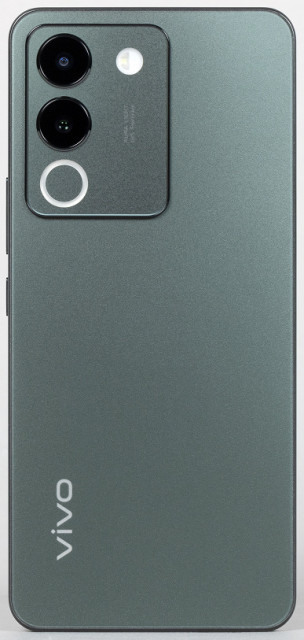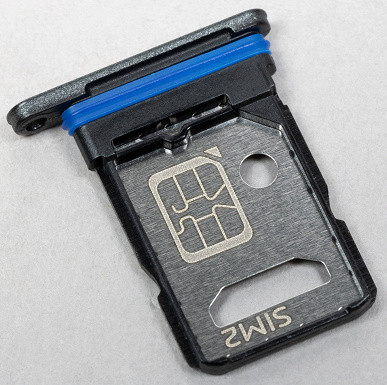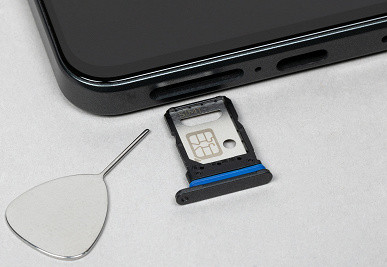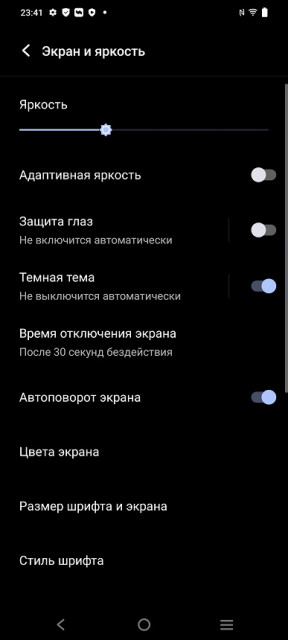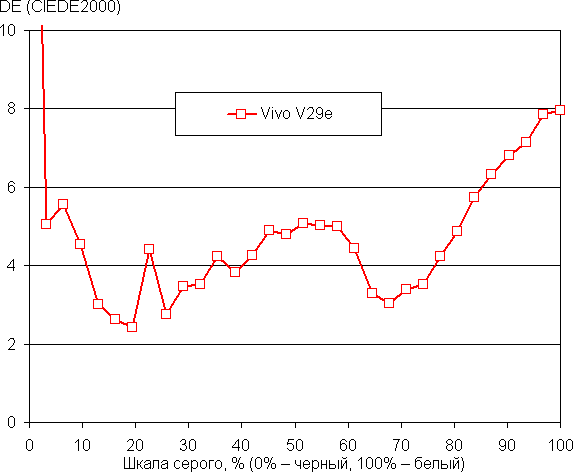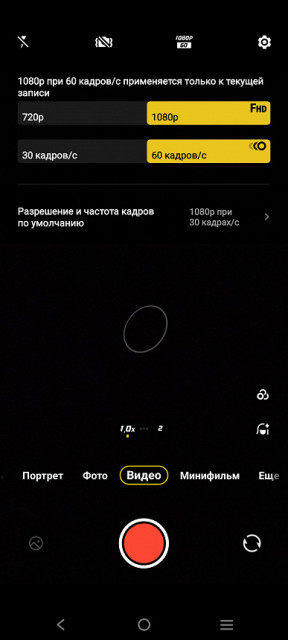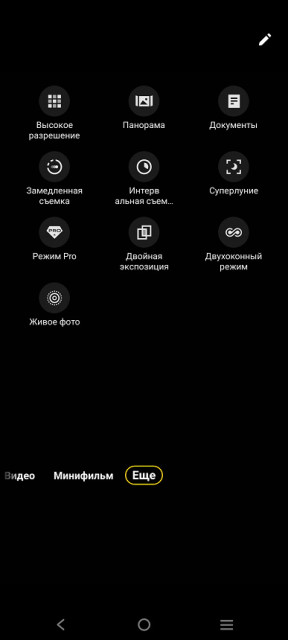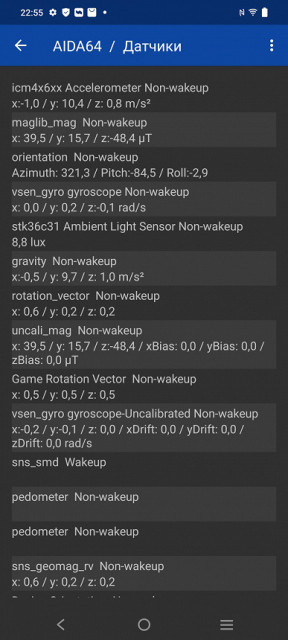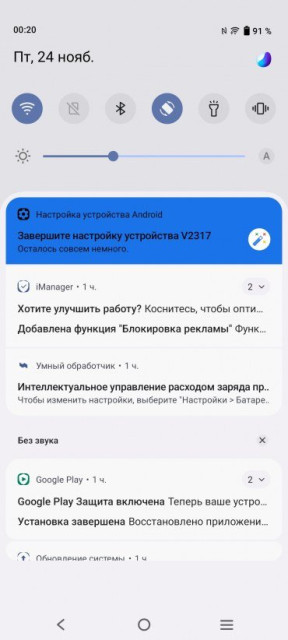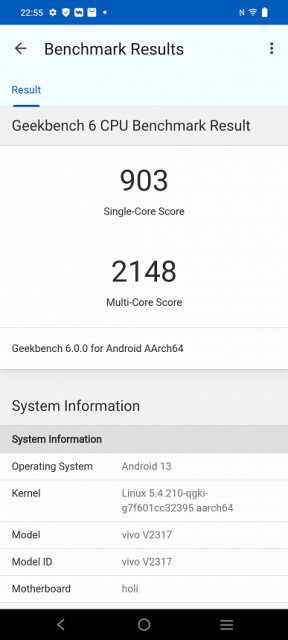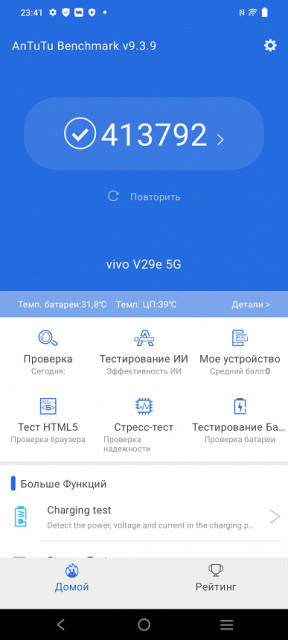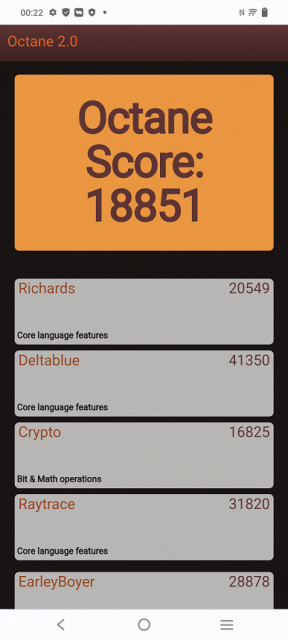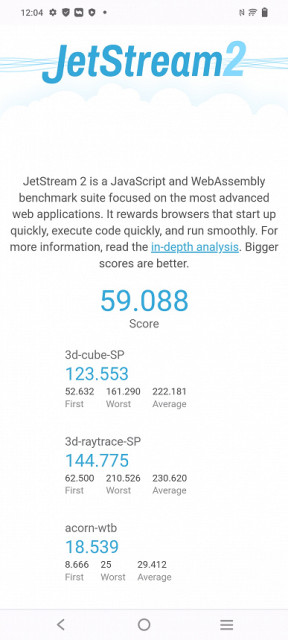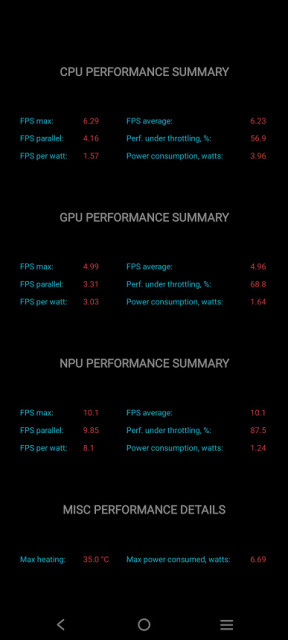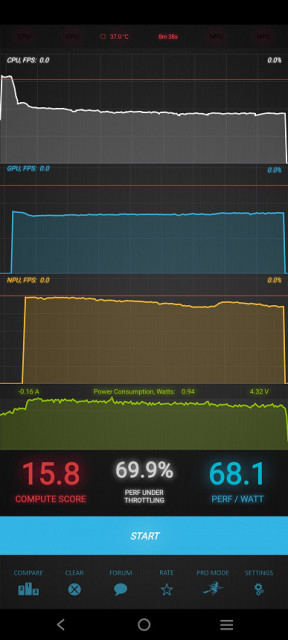After introducing the main model Vivo V29, the brand has launched a more affordable version called Vivo V29e 5G. The simplifications on this model aren't quite as drastic, but some of the changes, such as the less expressive but more practical body, prove to be quite useful. It is important to note that at the time of writing the review, the price of the new model was almost one and a half times lower, which makes it especially interesting for consideration.
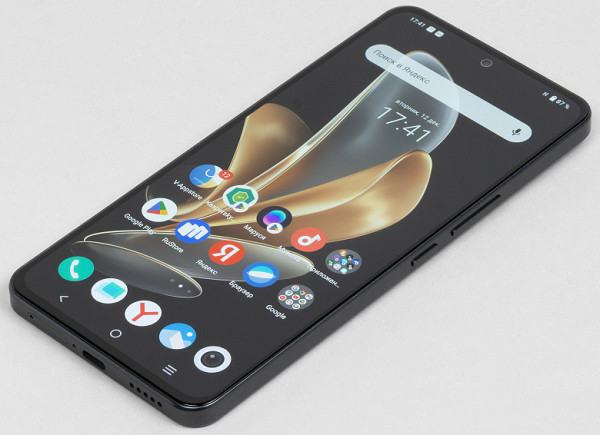
Key Features of Vivo V29e 5G (Model V2317)
- SoC Qualcomm SM6375 Snapdragon 695 5G, 8 processor cores (2×Cortex-A78 @2.2 GHz + 6×Cortex-A55 @1.8 GHz)
- GPU Adreno 619
- Operating system Android 13, Funtouch 13
- Touch display AMOLED, 6.67″, 1080×2400, 120 Hz, 20:9, 395 ppi
- RAM 8/12 GB, internal memory 256 GB (UFS 2.2)
- No microSD support
- Nano-SIM support (2 pcs.)
- Networks 2G GSM, 3G WCDMA, 4G LTE, 5G
- GPS, Glonass, Galileo, BDS
- Wi-Fi 5 (2.4/5 GHz)
- Bluetooth 5.1, A2DP, LE
- NFC
- USB 2.0 Type-C, USB OTG
- There is no 3.5mm audio output for headphones
- Cameras 64 MP + 8 MP, video 1080p@60 fps
- Front camera 50 MP with autofocus
- Proximity and lighting sensors, magnetic field, accelerometer, gyroscope
- Fingerprint scanner (under the screen)
- Battery 4800 mAh, charging 44 W
- Dimensions 162×75×7.7 mm
- Weight 190 g
Appearance and ease of use
The Vivo V29e 5G smartphone comes in a cardboard box with a stylish, laconic, pleasant design.
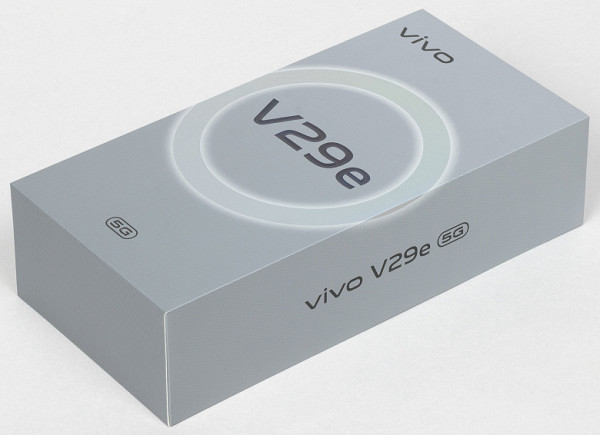
The smartphone comes with a large charger with a maximum output power of 44 W, a connection cable and a protective case.
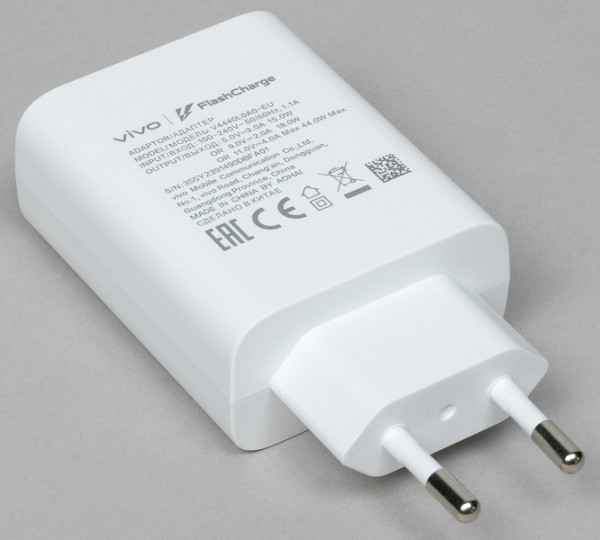
The Vivo V29e 5G features a modern design with wide, flat sides and smooth surfaces on the front and back. There are no unnecessary bends or curved glass here — the body is held in the hand with pleasure thanks to the wide, rigid sides without unnecessary rounding.
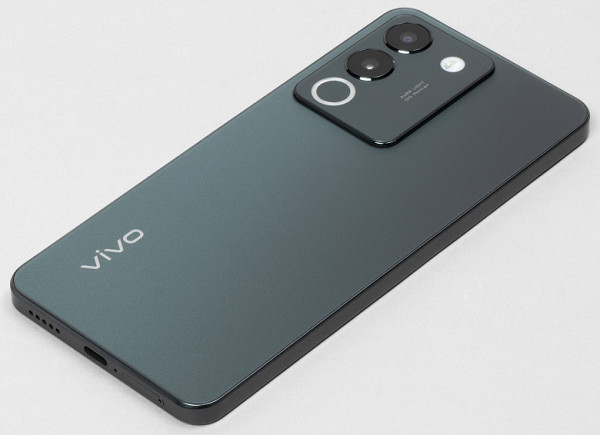
This smartphone stands out with its stylish and simple design, without giving any clues about its price. The side frame is made of plastic, and the front and back panels are made of glass. The back has a matte finish, giving the device an additional elegant accent.
The dimensions of the device are not very large. In its price category, this is perhaps one of the thinnest and lightest smartphones.

The included silicone case is transparent and flexible. It is thick and reliable, with protrusions covering all the particularly vulnerable areas of the smartphone (cameras, connectors).

The camera block on the back side is equipped with an “Aura” ring light that can change color depending on the modes. In the settings you can choose the color, which contributes to more advantageous portraits. The soft glow of the ring does not blind, unlike a standard LED flash. The idea is great, but why not maintain symmetry by moving this circle, for example, to the right of the lower chamber and reducing the protrusion of the block?

Both side buttons are conveniently located on the right. They are wide and easy to touch. There is no fingerprint scanner built into the power button; instead, it is located at the bottom of the front panel, below the screen.
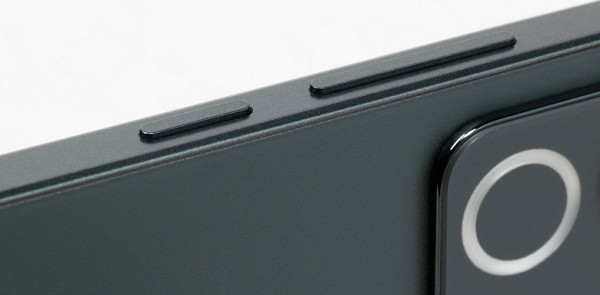
The front camera is single, it is installed behind a round cutout in the screen matrix at the top center.

The slot on the bottom can accommodate two Nano-SIM cards (on one side and the other side of the sled). But a microSD memory card cannot be installed.
Also at the bottom end there is a speaker, microphone and USB Type-C connector. There is no 3.5mm audio output for a wired headset.

There is nothing on the top end except the hole for an additional microphone.

The Vivo V29e 5G smartphone does not have full protection from moisture and dust, but its body is equipped with light splash protection according to the IP54 standard. There are two color options available in the market: Rose Gold and Mysterious Forest.
Screen
The Vivo V29e 5G smartphone features a 6.67-inch AMOLED display with a resolution of 1080×2400 (20:9 aspect ratio) protected by flat glass. The pixel density is 395 ppi. The screen supports 120Hz refresh rate.
The front part of the screen of the Vivo V29e 5G smartphone is made in the form of a glass plate with a smooth, mirror-like surface that is scratch-resistant. The anti-glare properties of the screen, judging by the reflection of objects, are superior to those presented on the screen of the Google Nexus 7 (2013) (below simply Nexus 7). The outer surface of the screen is equipped with a special oleophobic (grease-repellent) coating, the effectiveness of which is significantly superior to that on the Nexus 7. This ensures that fingerprints are easier to remove and appear slower than regular glass.
When manually controlling the brightness and displaying the white field on the entire screen, the maximum brightness value was about 480 cd/m² in normal conditions, and in strong light it can reach 760 cd/m². This high brightness makes the screen extremely readable. It's important to note that the smaller the area of white on the screen, the brighter it glows, meaning that the actual maximum brightness of the white areas is almost always higher. Taking into account the excellent anti-glare properties, readability during the day in the sun should be at a high level, and the dark theme, in addition to saving battery power, contributes to better legibility of information on the screen in high light conditions.
The minimum brightness value for manual control is 2 cd/m², which ensures comfortable use of the device even in complete darkness. There is automatic brightness adjustment based on the light sensor located under the screen to the right of the front camera. In automatic mode, as lighting conditions change, the screen brightness increases or decreases accordingly. This feature depends on the position of the brightness adjustment slider, which allows the user to adjust the brightness level to suit the current conditions. If you leave all settings at default, the auto-brightness function sets the screen brightness in complete darkness to 4 cd/m² (dark), in office artificial lighting conditions (approximately 550 lux) — to 100 cd/m² (satisfactory), and in direct sunlight — up to 760 cd/m² (maximum brightness, which is necessary). In practice, we made a small adjustment to the brightness in complete darkness, increasing it to 10 cd/m², which provided the optimal combination of values: 10, 100 and 760 cd/m².
At high and medium brightness levels there is significant modulation with a frequency of 120 Hz. The figure shows graphs of brightness (on the vertical axis) versus time (on the horizontal axis) for various brightness settings. Let's look at the 60Hz mode first:
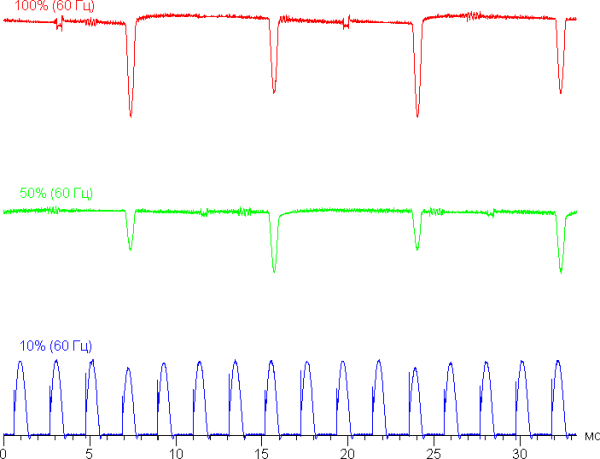
It is noticeable that at high and medium brightness levels there is minimal flicker, eliminating visible flicker. However, with a significant decrease in brightness, modulation appears with a high relative amplitude and significant duty cycle (frequency 480 kHz). This flicker becomes noticeable when testing the stroboscopic effect or during rapid eye movements. Depending on individual sensitivity, this effect may cause increased fatigue. It is important to note that the modulation phase varies across the screen area, and a high frequency smoothes out the negative effects of flicker.
In the screen settings there is an option to activate a mode with an increased refresh rate of up to 120 Hz:

When the 120 Hz mode is activated, the smoothness of scrolling lists and menus increases noticeably. It is worth noting that increasing the frequency to 120 Hz only applies to dynamic images, while for static images the refresh rate is reduced to 60 Hz. Now let's consider whether the nature of the modulation will change:
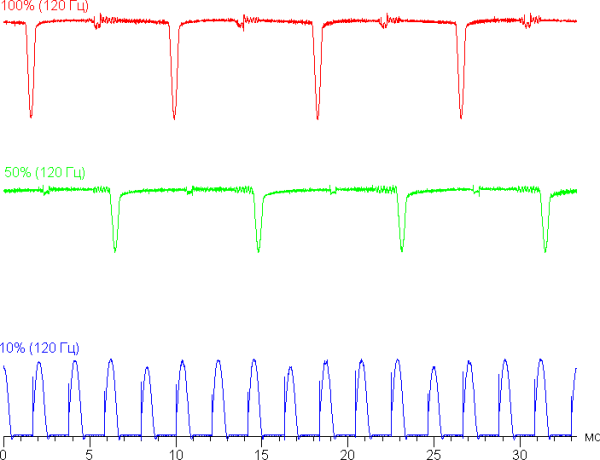
No noticeable differences were found.
This screen is equipped with an AMOLED matrix (active matrix organic light-emitting diodes). A full-color image is formed by subpixels of three primary colors — red ®, green (G) and blue (B), while the number of red and blue subpixels is half as many, which is represented as RGBG. This is confirmed by a fragment of a microphotograph:

In the presented fragment, you can take into account 4 green subpixels, 2 red (represented by halves), and 2 blue (1 full and 4 quarters). By repeating such fragments, you can fill the entire screen without gaps or overlaps. This matrix is known as PenTile RGBG, introduced by Samsung. The screen resolution is estimated by the manufacturer based on green subpixels, while the resolution for the other two colors will be lower. Some artifacts in the form of jagged contrast edges are observed, but due to the high resolution they have minimal impact on image quality.
The screen has excellent viewing angles. While white can take on subtle iridescent hues when deviated, black remains pitch black at any angle. Black quality is so outstanding that the contrast setting becomes almost meaningless. For a visual comparison, photographs are presented in which the same images are displayed on the screens of a smartphone (above) and another device (Nexus 7 — below). The brightness of the screens is initially set to approximately 200 cd/m², and the color balance on the camera is forced to 6500 K.
A white field is shown perpendicular to the screens:
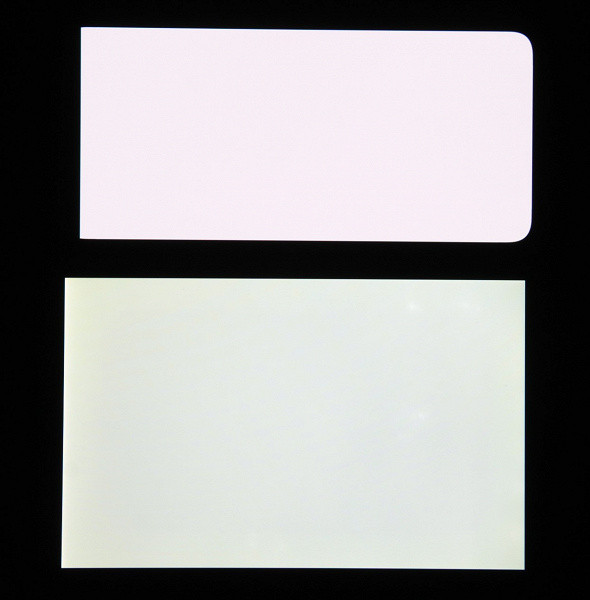
Note the good uniformity of brightness and color tone of the white field.
And a test picture (Pro Mode profile):

Based on our visual assessment, the colors on the tested screen look quite natural, although the color balance is slightly different. It is important to note that a photograph cannot fully convey information about color quality and is provided for illustrative purposes only. For example, in photographs of the tested screen there is a pronounced reddish tint to the white and gray fields, which is visually absent when viewed from a perpendicular view, as confirmed by hardware tests using a spectrophotometer. This is due to the fact that the spectral sensitivity of the camera sensor does not exactly match the characteristics of human vision.
The photo above was taken after selecting the «Pro Mode» profile in the screen settings, of which there are a total of three.
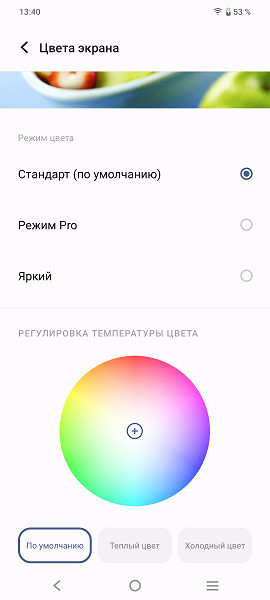
When you select the first one, Standard, which is set by default, the colors are oversaturated and unnatural:

This profile has a good approximation to DCI coverage (see below). When choosing the Vivid profile, the color saturation is even higher:

This device allows you to adjust the color balance by selecting a color temperature profile or adjusting the hue on the color wheel.
The brightness of both screens noticeably decreases when viewed from an angle, but the smartphone exhibits a much smaller drop in brightness compared to LCD screens. As a result, despite technically the same brightness, the smartphone screen appears visually brighter (compared to LCD screens), especially when the device is viewed from a slight angle.
Switching the state of the matrix elements occurs almost instantly, however, when turning on (and less often when turning off) the screen, a small step with a width of approximately 17 ms (at a screen refresh rate of 60 Hz) or approximately 8 ms (120 Hz) may be observed. For example, the graph shows the dependence of brightness on time during the transition from black to white and back:
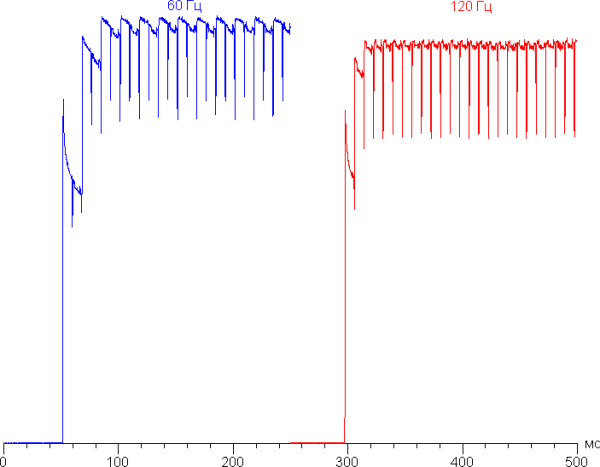
Under certain conditions, the presence of this step can (and does) cause the effect of trails that trail behind moving objects.
A gamma curve based on 32 points with equal intervals of grayscale values did not reveal any deviations in shadows or highlights. The exponent of the approximating power function is 2.33, which is slightly higher than the standard value of 2.2. However, the real gamma curve practically does not deviate from the power law:
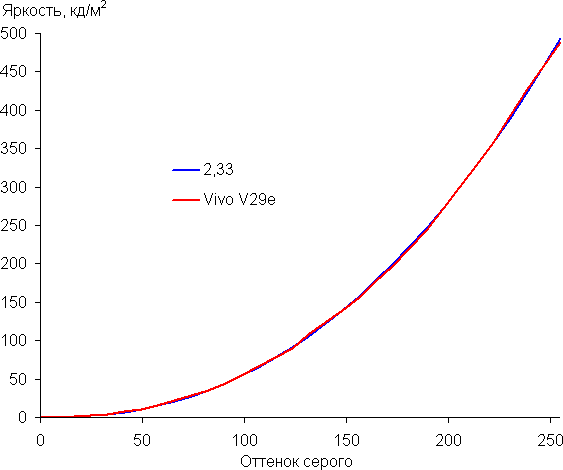
It is important to note that in OLED screens, the brightness of image fragments dynamically changes depending on the nature of the displayed content, partially decreasing for generally light images. Therefore, the resulting brightness versus hue curve (gamma curve) is likely to differ slightly from the gamma curve of a static image, since the measurements were carried out with sequential grayscale output across almost the entire screen.
The color gamut for the Vivid profile turns out to be very wide, exceeding the DCI-P3 range:

When you select the Pro Mode profile, the coverage is compressed to the sRGB boundaries:
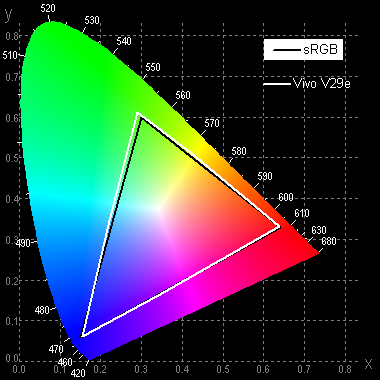
Coverage in the case of the Standard profile is close to the DCI-P3 space:
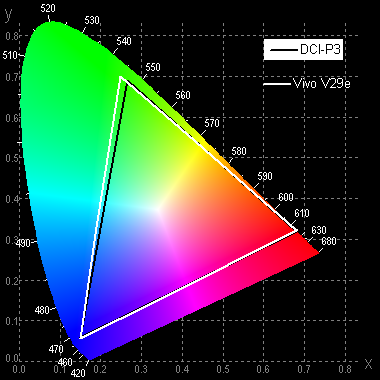
Without correction (the Bright option), the component spectra (that is, the spectra of pure red, green and blue) are very well separated:
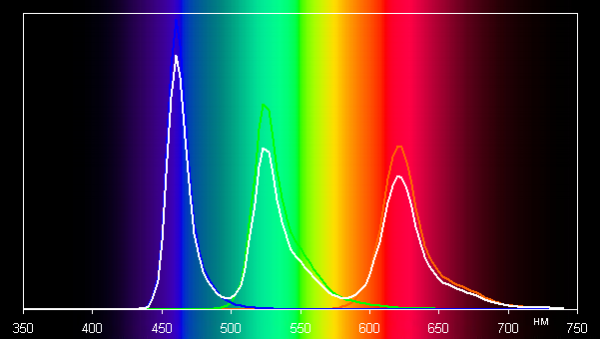
In the case of the Pro Mode profile, the color components are mixed with each other to a large extent:
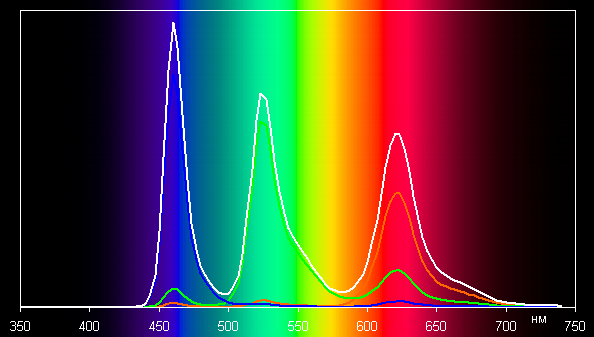
It should be noted that on wide-gamut screens, regular images optimized for sRGB devices may appear unnaturally saturated without appropriate color correction. In this regard, it is recommended, in most cases, to use the Pro Mode profile when viewing movies, photos and natural images. The Standard profile may be appropriate when playing content with the DCI-P3 coverage typical of digital cinema, but such cases are rare in everyday life.
Even without additional correction, the balance of shades on the gray scale in the Pro Mode profile remains good. The color temperature is close to the standard 6500 K, and the deviation from the blackbody spectrum (ΔE) does not exceed 10 units, which is considered acceptable for a consumer device. In addition, color temperature and ΔE practically do not change from hue to hue, which has a beneficial effect on the visual assessment of color balance:
(The darkest areas of the gray scale can be neglected in most cases, since color balance in these areas is not critical, and the uncertainty in measuring color characteristics at low brightness is large.)
Of course, it is possible to use the «Eye Protection» setting, which allows you to reduce the intensity of the blue component:

In principle, strong light can disrupt the circadian rhythm (see the article on the iPad Pro with 9.7-inch display), but this problem can be solved by reducing the brightness to a low, but still comfortable level, and there is no point in distorting the color balance, reducing the proportion of blue.
Apparently, this device does not support DisplayPort Alt Mode for USB Type-C — outputting image and sound to an external device when connected to a USB port. (According to USBTreeView report.)
To summarize, the screen has a very high maximum brightness (up to 760 cd/m²) and excellent anti-glare properties, which allows you to use the device outdoors even on a bright sunny day. In complete darkness, the brightness can be reduced to comfortable values (up to 2 cd/m²). It is recommended to use the auto-brightness mode, which works effectively. The oleophobic coating is effective, the 120Hz refresh rate mode, and good color balance and sRGB coverage after selecting the appropriate profile are all advantages of the screen. It is also worth noting the general advantages of OLED screens: true black color (if there are no reflections on the screen), uniformity of the white field and less drop in brightness when viewed at an angle compared to LCD screens. Disadvantages include screen flickering, which can be noticeable at low brightness. However, overall the screen quality is rated as very high.
Camera
At the back, Vivo V29e 5G has two cameras:
- 64 MP, f/1.8, PDAF, OIS (main)
- 8 MP, f/2.2 (wide-angle)
The main camera with the OmniVision OV64B sensor has fast phase detection autofocus and optical stabilization. The user is given the opportunity to shoot in pixel combining modes and in full resolution. Full resolution mode provides high detail, but the image may contain small noise. After processing, 16-megapixel photos look clean and smooth, with no visible noise. Photos have been carefully enhanced to achieve a visually pleasing image, but some fine detail may be lost in this processing. The choice between modes depends on the user's preferences and needs.
The overall level of photography on the smartphone is good, even slightly exceeding expectations. Images have good detail and excellent sharpness, while the background is nicely blurred. However, despite the increase in contrast during processing, it remains somewhat low, which gives the pictures a lack of saturation and expressiveness. The effect is noticeable even in good lighting. As the lighting level decreases, the quality of photos deteriorates significantly, and in this regard the sensor is slightly inferior to that used in the Vivo V29.
Example of night shooting:

2x digital zoom is available.
The wide-angle module with the GalaxyCore GC08A3 sensor (8 MP) is quite simple: even in the center of the frame, the detail leaves much to be desired, and the edges are just one big blur.

The front camera in this model is identical to the one installed in the Vivo V29 (50 MP, f/2.0, AF). It delivers high-quality images without any complaints: excellent detail, clarity, and sharpness, as well as good dynamic range. Notably, it has autofocus, which is unusual for selfie cameras and further improves functionality.

The smartphone is capable of recording video with a maximum resolution of 1920x1080 at 60 frames per second, however, it should be noted that the 60 fps mode may not be available in some regional versions, and in such cases you will have to limit yourself to 30 fps. There is no possibility of shooting in 4K resolution, but electronic stabilization is provided. Video has good sharpness and clarity, although detail may seem somewhat limited. Color rendition is natural, but if there is snow in the frame, the white balance may be subject to changes. The sound recording quality is high.
Telephone and communications
The Vivo V29e 5G smartphone supports mobile networks up to 5G. In the urban area of the Moscow region, the device demonstrates stable operation in wireless networks, maintains a reliable connection and quickly restores communication after temporary interruptions.
The smartphone includes a wireless adapter compatible with Wi-Fi 5 (802.11a/b/g/n/ac, 2.4/5 GHz) and Bluetooth 5.1. NFC support is also implemented.
The device is equipped with a single-channel satellite navigation module that interacts with GPS, Glonass, Galileo and BDS. During a cold start, detecting the first satellites may take some time, but the positioning accuracy remains at an acceptable level.
The sound of the interlocutor in the smartphone speaker is loud and clear. The vibration motor has average power. The device has all the necessary sensors, including a gyroscope.
Software and multimedia
The Vivo V29e 5G smartphone runs on Android 13 operating system with Funtouch 13 user interface. The device comes pre-installed with a lot of apps and offers a variety of software for download, which may seem redundant. It is important to note that there are no pop-up advertisements. The top curtain is designed as a single “telescopic” space, without being divided into two parts. It's also worth noting that official access to the Google store and apps is supported.
The smartphone is not equipped with stereo speakers. The single monaural speaker provides fairly loud and rich sound. For wireless headphones, aptX HD and aptX Adaptive protocols are supported. However, it is worth noting that there is no 3.5mm wired headphone jack.
Performance
The Vivo V29e 5G smartphone is equipped with an octa-core Qualcomm SM6375 Snapdragon 695 5G processor, with Adreno 619 GPU graphics accelerator. LPDDR4 RAM is available in 8 or 12 GB options, and 256 GB of built-in UFS 2.2 storage. Unfortunately, there is no option to expand the memory using a memory card. The smartphone also supports connecting external devices via the USB Type-C port in USB OTG mode.
The Snapdragon 695 platform was introduced on October 27, 2021 and is manufactured using the 6 nm process technology. This is a mid-level solution that can score about 400 thousand points in the AnTuTu performance test. The processor characteristics are sufficient for smooth operation of the operating system and launching not too demanding games. Despite the fact that the platform is not top-end, it is adequate for a smartphone in this price segment.
Testing in comprehensive tests AnTuTu and GeekBench:
For ease of analysis, we have collected all the results of testing the smartphone in the latest versions of popular benchmarks and presented them in the form of tables. The table also shows the results of several other devices from different segments that have passed similar tests on the latest versions of the benchmarks. It should be noted that within a single comparison it is impossible to provide results from different versions of benchmarks, and many worthy and relevant models remain outside the scope of this analysis, since they were tested on previous versions of test programs.
| Vivo V29e 5G (Qualcomm Snapdragon 695) | Tecno Camon 20 Premier 5G (Mediatek Dimensity 8050) | Vivo V27 (Mediatek Dimensity 7200) | Poco X5 Pro 5G (Qualcomm Snapdragon 778G) | Tecno Pova 5 Pro (Mediatek Dimensity 6080) | |
|---|---|---|---|---|---|
| AnTuTu (v9.x) (bigger is better) | 413792 | 683485 | 602528 | 536193 | 397188 |
| GeekBench 6 (bigger is better) | 903/2148 | 1097/3097 | 1198/2686 | 941/2640 | 759/2053 |
Testing the graphics subsystem in 3DMark and GFXBenchmark gaming tests:
| Vivo V29e 5G (Qualcomm Snapdragon 695) | Tecno Camon 20 Premier 5G (Mediatek Dimensity 8050) | Vivo V27 (Mediatek Dimensity 7200) | Poco X5 Pro 5G (Qualcomm Snapdragon 778G) | Tecno Pova 5 Pro (Mediatek Dimensity 6080) | |
|---|---|---|---|---|---|
| 3DMark Wild Life Extreme Vulkan (bigger is better) | 360 | 1293 | 1165 | 687 | 368 |
| 3DMark Wild Life Vulkan (bigger is better) | 1198 | 4505 | 4186 | 2450 | 1327 |
| GFXBenchmark Manhattan ES 3.1 (Onscreen, fps) | thirty | 78 | 59 | 49 | 24 |
| GFXBenchmark Manhattan ES 3.1 (1080p Offscreen, fps) | 34 | 91 | 68 | 56 | 28 |
| GFXBenchmark T-Rex (Onscreen, fps) | 84 | 120 | 110 | 109 | 59 |
| GFXBenchmark T-Rex (1080p Offscreen, fps) | 95 | 212 | 160 | 132 | 69 |
Testing in browser cross-platform tests:
| Vivo V29e 5G (Qualcomm Snapdragon 695) | Tecno Camon 20 Premier 5G (Mediatek Dimensity 8050) | Vivo V27 (Mediatek Dimensity 7200) | Poco X5 Pro 5G (Qualcomm Snapdragon 778G) | Tecno Pova 5 Pro (Mediatek Dimensity 6080) | |
|---|---|---|---|---|---|
| Google Octane 2 (bigger is better) | 18851 | 27796 | 29329 | 27070 | 19194 |
| JetStream (bigger is better) | 59 | 60 | 87 | 73 | 50 |
AndroBench memory speed test results:
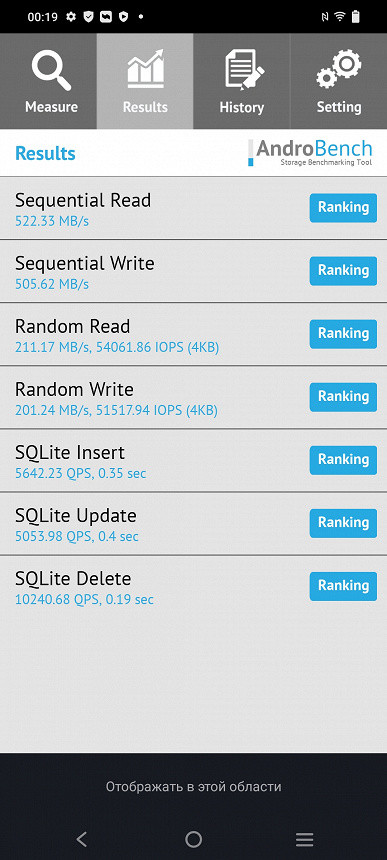
Heat
We test for performance degradation when heated using the Burnout Benchmark program, which allows you to load the CPU, GPU and NPU:
| Stress on | Heating performance as a percentage of maximum |
|---|---|
| CPU | 57% |
| GPU | 69% |
| NPU | 88% |
Battery life
The Vivo V29e 5G smartphone is equipped with a 4800 mAh battery, which, despite its small volume compared to some models, provides decent battery life. Compared to the previous V29 model, which has a battery capacity of 4600 mAh, the new product has demonstrated an increase in this figure.
During testing carried out at normal power consumption levels without activating power-saving functions, the smartphone demonstrated satisfactory battery life. Tests included continuous reading in the Moon+ Reader app using the standard light theme, continuous viewing of HD video (720p) over a home Wi-Fi network, and the game Injustice 2 with automatic graphics settings.
| Battery capacity | Reading mode | Video mode | 3D Game Mode | |
|---|---|---|---|---|
| Vivo V29e 5G | 4800 mAh | 21:00 | 18:30 | 8:00 am |
| Vivo V29 | 4600 mAh | 21:00 | 19:00 | 8:30 a.m. |
| Poco X5 Pro 5G | 5000 mAh | 18:00 | 20:00 | 7:00 am |
| Realme 10 Pro+ 5G | 5000 mAh | 19:00 | 18:00 | 5:00 a.m. |
| Xiaomi 12T | 5000 mAh | 19:00 | 16:00 | 6:00 am |
The values shown represent the maximum results achieved under «ideal» conditions, including no SIM cards installed. Any changes to the use case will likely cause these results to deteriorate.
With the included 44 W wall charger, your smartphone can be fully charged in just an hour. However, wireless charging function is not supported.
Bottom line
Compared to the older model, in the V29e many characteristics have been simplified: the processor is Qualcomm, but younger; AMOLED screen, but with observable flickering; less powerful charging; less capable main camera, although the difference during daytime shooting is not so noticeable, and the selfie camera remains the same, excellent. However, the V29e is significantly cheaper, which makes these smartphones representative of different price categories. The V29e, given its performance and affordability, is an interesting model in its price range. However, there are many competitors in the market with similar capabilities.

